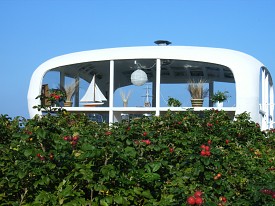The Future is Now: Say Hello to the Smart House
 Meet my new obsession: the smart house. Smart homes are the wave of the future, and they're starting to become more than just idle speculation or characters in pop culture. Using an array of interlinked systems, they bring the latest to home automation and universal design, creating a home that's capable of controlling its own temperature, helping people save water, and, yes, even reminding people to take their medications. Pretty cool, right?
Meet my new obsession: the smart house. Smart homes are the wave of the future, and they're starting to become more than just idle speculation or characters in pop culture. Using an array of interlinked systems, they bring the latest to home automation and universal design, creating a home that's capable of controlling its own temperature, helping people save water, and, yes, even reminding people to take their medications. Pretty cool, right?
Smart homes require a tremendous amount of carefully thought out design as well as cooperation between electricians, general contractors, and other members of the team involved in their construction. They essentially allow their residents to control all household functions from a single control panel, which also usually permits remote access. That means you can turn the TV off to make your kids focus on homework even if you're somewhere else, and you can check from work to confirm you turned the stove off and set the home alarm when you ran out the door this morning.
Smart homes can monitor energy usage, regulate temperature, raise and lower curtains and shades, help out in the kitchen, control household electronics including lights, gadgets, and chargers, and a whole lot more. The underlying systems architecture of a smart home is partially customized to the home, depending on the features it has, and partially dependent on standardized software used to manage smart home systems. Every user can program the home to meet specific needs, too: want your house to wake you up when the baby's restless? It can do that.
Did I mention that you can command your home by voice, too? I'm serious here when I talk about how the future is now. Imagine walking in the front door, telling your house to bring the lights up, and asking it to get the oven preheating so you can start cooking that lasagna you premade over the weekend and stuck in the freezer so it would be ready midweek. Anything that runs on electricity can be jacked into a smart home network, including complex sensor systems.
This has tremendous implications for older adults and some disabled people in terms of living independently. Once, assisted living was often the only option if the funds for full-time caregiving weren't available. Now, a smart home can bridge the gap, allowing people to live fully or partially on their own while still getting the assistance they need. For disabled people, this has a lot of implications; for example, in the Bay Area, a disabled person might work with a San Francisco contractor on installing a voice controlled system that would allow her to call her aides, adjust her electronic medical devices, and more.
Right now, smart homes are pretty pricey, with systems running into the tens of thousands of dollars. They're even more expensive when built from the ground up, since many integrate stunning architecture and custom features. But that's going to change in the near future as the technology catches on and more and more people adopt it, bringing down the price of popular systems and features.
Katie Marks writes for Networx.com.
Looking for a Pro? Call us (866) 441-6648

Electrical Average Costs
Electricians Experiences

Bathroom Tile With Outstanding Attention To Detail

Drywall Repair Drama: And The Leaks Went On And On



